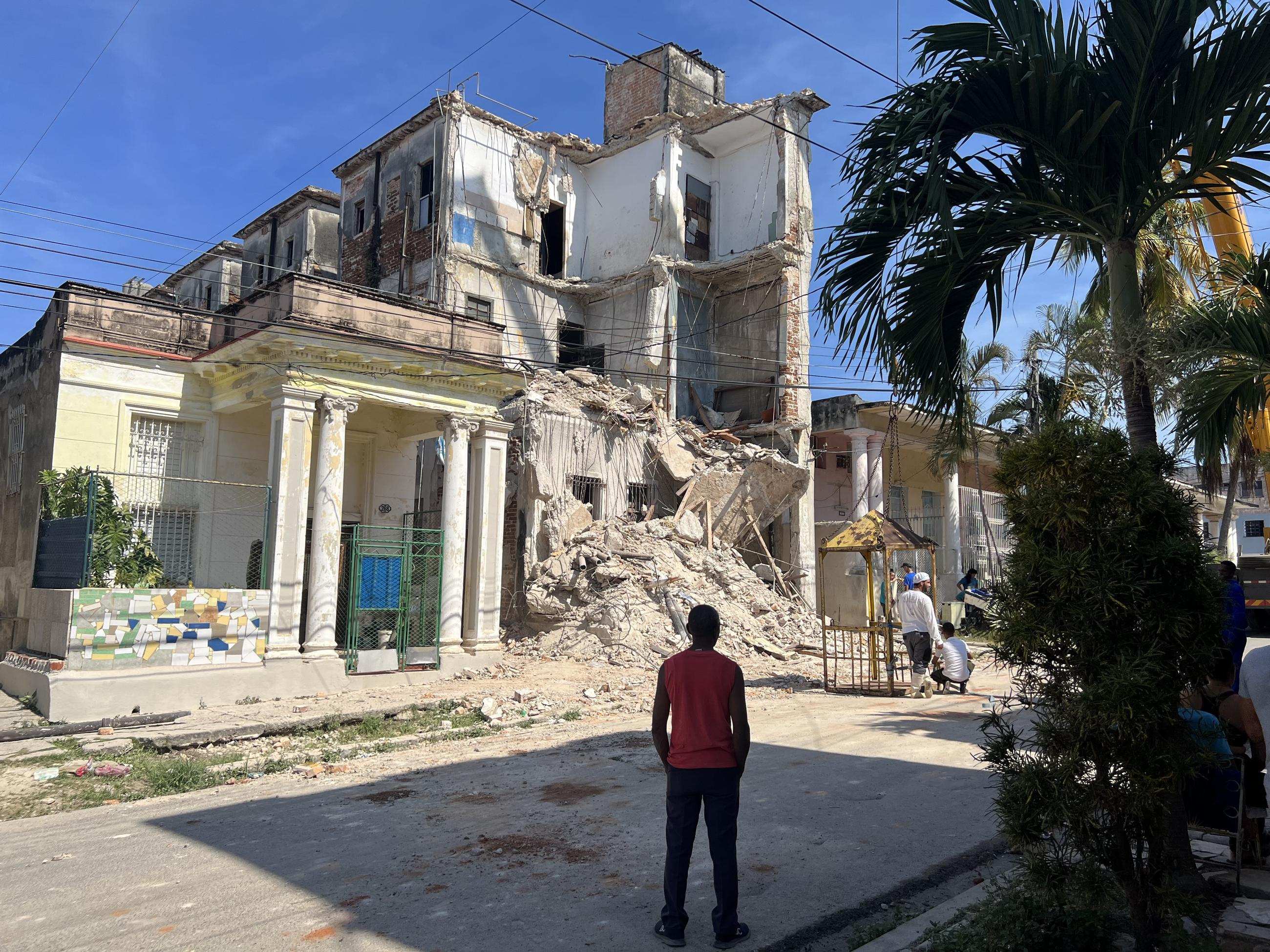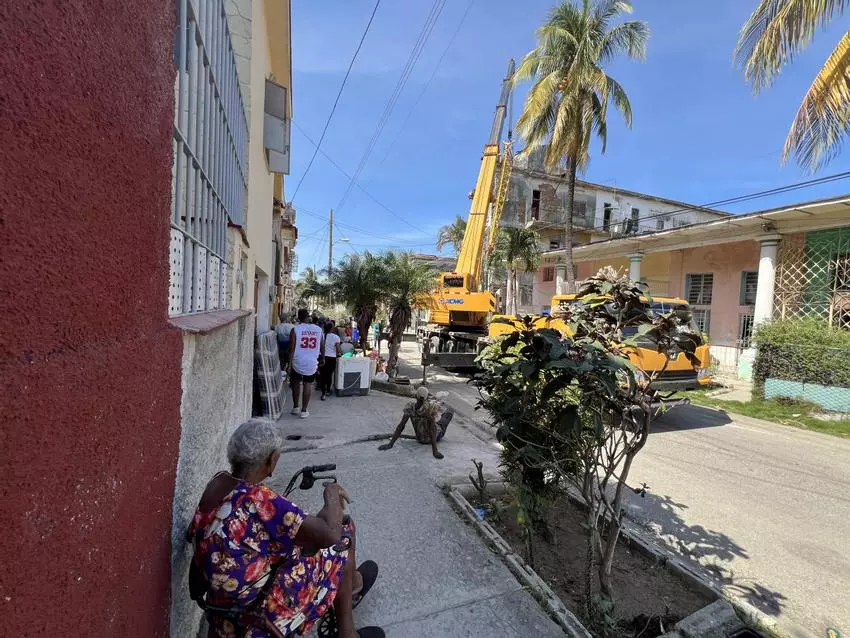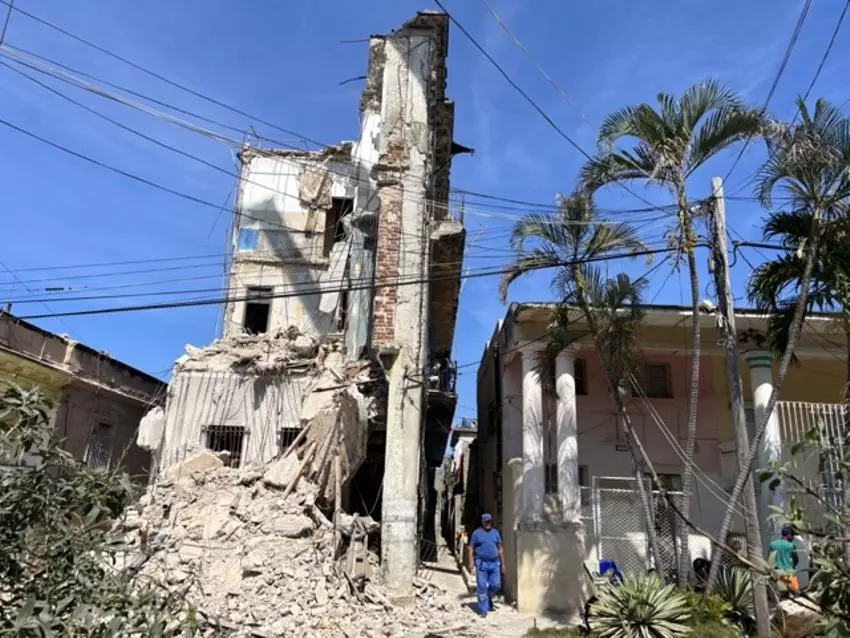It was a three-story building located in Santos Suárez and declared uninhabitable years ago.

![]() 14ymedio, José Lassa, Havana, 17 February 2025 – Steel girders exposed to the sun, the front of the building turned into rubble, and dozens of distressed residents standing around it, this was the scene on Monday morning at the building in Calle San Bernardino between Durege and General Serrano, in the Havana suburb of Santos Suárez in the Diez de Octubre district. The building collapsed at the weekend leaving ten families without a roof over their heads.
14ymedio, José Lassa, Havana, 17 February 2025 – Steel girders exposed to the sun, the front of the building turned into rubble, and dozens of distressed residents standing around it, this was the scene on Monday morning at the building in Calle San Bernardino between Durege and General Serrano, in the Havana suburb of Santos Suárez in the Diez de Octubre district. The building collapsed at the weekend leaving ten families without a roof over their heads.
Sitting in a wheelchair on the pavement out in front, one resident of the collapsed building pointed to the ground floor and said “That was my home!” Around twenty people had brought onto the street the few belongings that they had managed to find among the chunks of wall and twisted metal: a cushion, a washer, and a few pictures which had once adorned the living room walls of those homes which no longer existed.
A group of public workers equipped with a crane spent some hours pulling down the remaining bits of the three-storey building – which had been declared uninhabitable for years but in which a number of families still lived. Down onto the stopped traffic, and onto the neighbourhood itself – braced against every sledgehammer blow to the walls – the yellow dust drifted down and covered everything. “At first they said that they were only going to demolish the top floors but now they’re saying they’ll have to demolish it all”, the woman in the wheelchair explained to 14ymedio.
“My home was on the ground floor”, she said, and pointed towards an area of the building in which the tops of the windows themselves were barely still visible, being surrounded as they were by a mountain of rubble. While she spoke, the crane was lifting a worker upwards so that he could help to bring various belongings down from the upper apartments. Every rescued item was greeted by the residents with cries of jubilation, but also with some concern: “I don’t know whether I’ll be able to rescue my bed”, expressed one young woman with a child in her arms.

Disregarding warnings not to enter, some residents attempted to get access via the doors in a side passage, in order to try and bring out kitchen appliances, a purse, or family photos kept in a drawer. They came out a short while later with something in their hands but with shocked expressions on their faces. “It’s terrible in there, it feels like it’s going to carry on collapsing”, said one man who had managed to bring out various pairs of shoes and an electric stew pot.
The uncertainty about what will happen after the demolition was also a topic of conversation. “They’ll probably send us to a hotel or who knows where now”, speculated one of the victims who hadn’t managed to recover even one object of value from within the collapsed walls. Until now, neighbourly solidarity had provided them with water and something to eat, but those affected knew that they couldn’t remain indefinitely out on the street in front of the ruin overnight.

Building collapses are a frequent reality in the Cuban capital, especially when the rains and the bad weather soften the mortar in structures which are already in danger of collapse. At the end of June last year, when Havana experienced several days of storms, at least 19 buildings suffered from either partial or complete collapse, according to a 14ymedio source who preferred to remain anonymous.
Video footage of the collapse of a villa in Calle 26, between 27 and 29 in Playa district, filmed by various passers-by and neighbours, was one of the most widely shared videos at that time – an incident which was estimated to have claimed at least one life and caused a number of people to be injured.
Translated by Ricardo Recluso
____________
COLLABORATE WITH OUR WORK: The 14ymedio team is committed to practicing serious journalism that reflects Cuba’s reality in all its depth. Thank you for joining us on this long journey. We invite you to continue supporting us by becoming a member of 14ymedio now. Together we can continue transforming journalism in Cuba.
